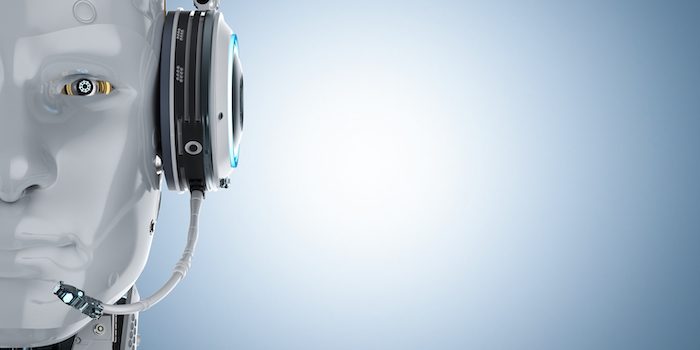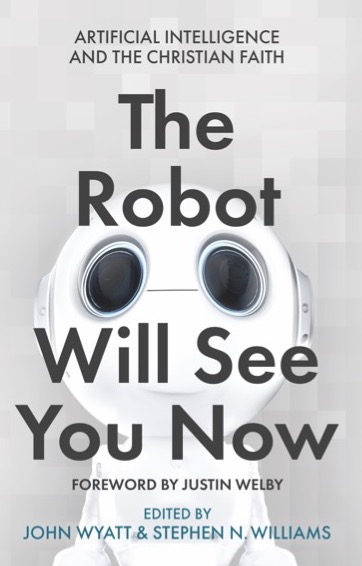
Shutterstock
Anyone reading this post is likely to be benefitting from Artificial Intelligence in multiple ways. For me that includes travel directions, suggestions on shopping sites and being alerted of transactions on my cards that were probably not made by me. But how can we make the most of the benefits of AI while staying alert to the potential dangers? What issues are particularly close to home for Christians, and how can we be part of the conversation – and action – around using AI for good and not harm? A new book, The Robot Will See You Now: Artificial Intelligence and the Christian Faith (SPCK), edited by John Wyatt and Stephen Williams explores these issues in a way that is accessible for the non-specialist. The excerpts below are from the chapter ‘AI and robots: some Asian approaches’ by Vinoth Ramachandra, the Sri Lankan-based International Secretary for Dialogue and Social Engagement, at the International Fellowship of Evangelical Students.
Many ancient societies, Eastern and Western, have been fascinated by self-propelling devices representing natural plants and animals. In the third century BCE, engineers in Hellenistic Alexandria, Egypt, were building mechanical robots. Accounts of similar machines in China date from around the same period, when a mechanical orchestra was made for the emperor.
In her book, Gods and Robots, Adrienne Mayor recalls how, in their legends and mythologies, Ancient Greek, Roman, Indian and Chinese societies envisaged artificial life, automata and human enhancements. Chinese chronicles tell of emperors fooled by realistic androids and describe artificial servants crafted in the second century CE by the female inventor Huang Yueying. In one Indian legend, presumably reflecting ancient trade links between India and the Hellenistic world, the Buddha’s precious remains were defended by robot warriors, copied from Greco-Roman designs for real automata. In India, automatons or mechanical beings that could move on their own were called bhuta vahana yanta, ‘spirit movement machines’ in Pali and Sanskrit. According to the story, it was foretold that the robots guarding the Buddha’s relics would remain on duty until a future king distributed those relics throughout his realm.
In recent years, Korean filmmakers have gone beyond this with the story Chunsangui Pijomul (The Heavenly Creature), one of three episodes in the 2012 science-fiction anthology Inryu Myeongmang Bogoseo (usually known in English as Doomsday Book). Far from robots being regarded as friendly human servants, these stories question the usefulness and highlight the danger of technology, and the possibility of automata in a high-tech age taking over humankind. In The Heavenly Creature, In-myung is a robot that lives in a Buddhist monastery, becomes a Buddhist, and somehow achieves independence from the humans who created it and escapes their control. The robot eventually attains enlightenment/nirvana. The robot-Buddha generates various reactions among humans: the Buddhist community venerates the enlightened robot; the corporation that invented it, however, decides to exterminate it out of fear, because the robot-creation no longer responds to the commands of its human creators, and it has achieved something (Buddhist enlightenment) that they have not.
Japan has long been at the cutting-edge of the robotics industry and, today, robots (including social/humanoid robots) are in wider circulation there than in any other country…These initiatives are paralleled by a growing support among some robotics engineers and politicians to confer citizenship on robots…
Japanese robot culture develops out of the ubiquitous and intimate presence of cartoon characters in everyday life. The most popular television series, indeed a mainstay of Japanese family life since 1970, when Japan’s new industrial era was transforming the nation, centres on a robot cat from the twenty-second century called Doraemon. Films based on the character of Doraemon have become Japan’s most lucrative franchise, spanning three generations. To date, the film series has earned around ¥187 billion ($1.7 billion). Doraemon is sent to help Nobita Nobi, a young boy, who gets poor marks in school and is frequently bullied by his classmates. Doraemon has a four-dimensional pouch in which he stores unexpected gadgets from the Future Department Store, such as Bamboo Copter, a small piece of headgear that allows its users to fly, Anywhere Door, a pink-coloured door that enables people who turn the knob to travel anywhere they imagine, and many more. But Doraemon is a flawed robot. His quick-fix tools from the future frequently backfire. They are convoluted and cause more problems than the original one they were supposed to resolve.
Although Doraemon is a successful modern brand, it’s possible to relate the character to the cultural traditions of the country, particularly to the yōkai (spirits/demons) of Japanese folklore. There are also the Shinto kami (spirits/gods), complex characters who are not always benevolent. Like the gods of Greek mythology, they are prone to mistakes, and are intentionally bad and occasionally virtuous. Also, in the Shinto tradition, the distinction between the natural and the artificial is not considered significant, although it is recognized. It is why the integration of robots into Japanese society has been seen by the public as a positive thing and has not generated the fears that typify Western science-fiction accounts of robots seizing control of the earth.
At the same time, Frédéric Kaplan has argued that there is no dream of fusion with such machines. On the contrary, it always seems important to keep a distance. The cyborg is seldom seen as a welcome creature in Japanese fiction:
Convergence between technology and biology seems to always be considered in negative terms. The young kid piloting the giant colossus symbolizes this well-defined frontier between the biological body and mechanical armour. In Japan, robots and humans may be living in harmony, but side-by-side. Post-human perspectives are rarely considered as having a positive future. More generally, it seems that technology can be ‘tamed’ without necessarily melding with it.
Kaplan is drawing on the notion of ‘technology taming’, used to describe the way Japanese state and society, since the Meiji Restoration of the latter half of the nineteenth century, have sought to absorb, enhance and redirect foreign technologies to consolidate, rather than undermine, Japanese culture. He reminds us that the world of the Pokémon, another successful export of Japanese popular culture, is entirely based on this principle. In this imaginary universe, children must capture small creatures, each of which possesses a particular power. A captured Pokémon changes from a wild creature to a tamed ally; and, having studied the characteristics of the creatures they have tamed, children engage in fights using them as weapons…
Philosophical reflection on robotics and machine intelligence is relatively limited in Asian academies. Since Buddhist metaphysics dismisses the discrete, enduring human self as an illusion and reduces consciousness to a succession of transient mental states, questions about robot selves and robot consciousness do not seem to trouble Buddhist ethicists. Most roboticists, whether Buddhist, Confucianist or atheist, seem to assume a functionalist or behaviourist approach to the human: if it looks like a duck and quacks like a duck, it is a duck…
In conclusion, the most important human capacities in the age of robotics and surveillance will be our moral, social and emotional intelligence. It won’t be the STEM skills that are currently seen as important for getting a job in shrinking labour markets. The irony is that our technological future compels us to reflect less on our technologies and more about the future of our common humanity.
 The Robot Will See You Now: Artificial Intelligence and the Christian Faith (SPCK), edited by John Wyatt and Stephen Williams, is available from SPCK (£12.99 paperback, £11.99 ebook).
The Robot Will See You Now: Artificial Intelligence and the Christian Faith (SPCK), edited by John Wyatt and Stephen Williams, is available from SPCK (£12.99 paperback, £11.99 ebook).
The London Institute for Contemporary Christianity has produced a small group resource on this topic which uses excerpts from a talk by John Wyatt.
Explore AI further on John Wyatt’s podcast.
Find more resources on AI and Robotics at Faraday Churches.




